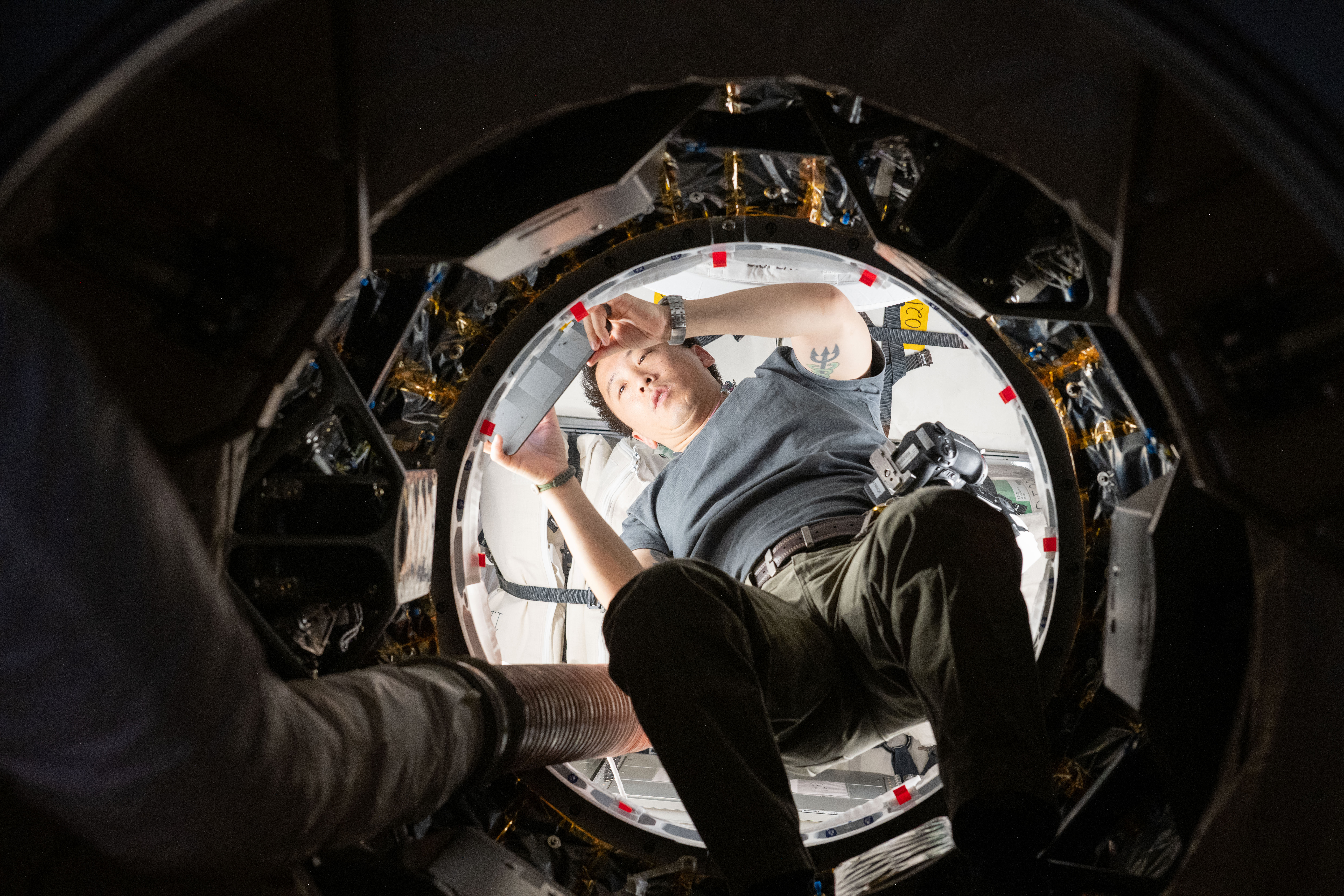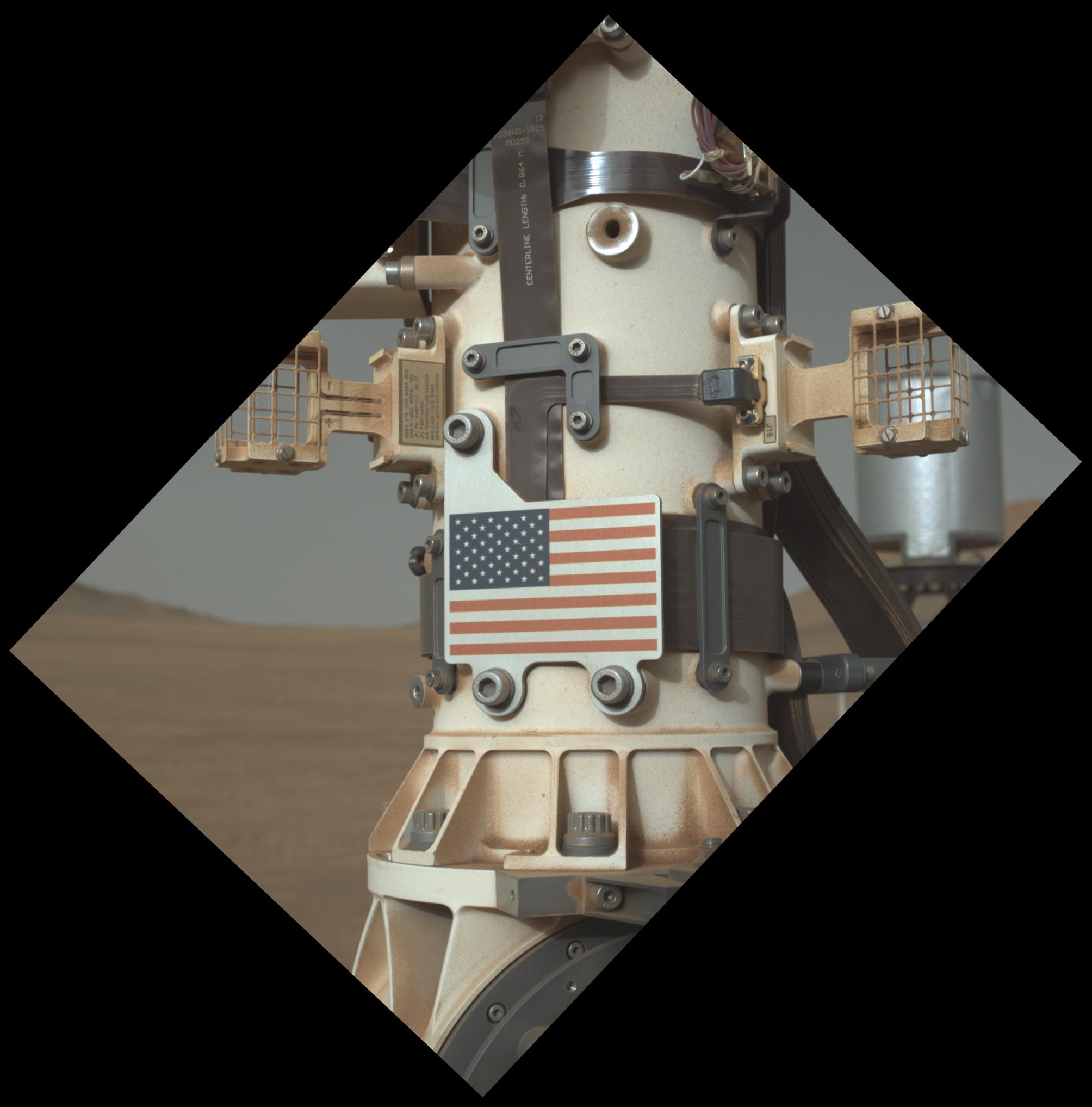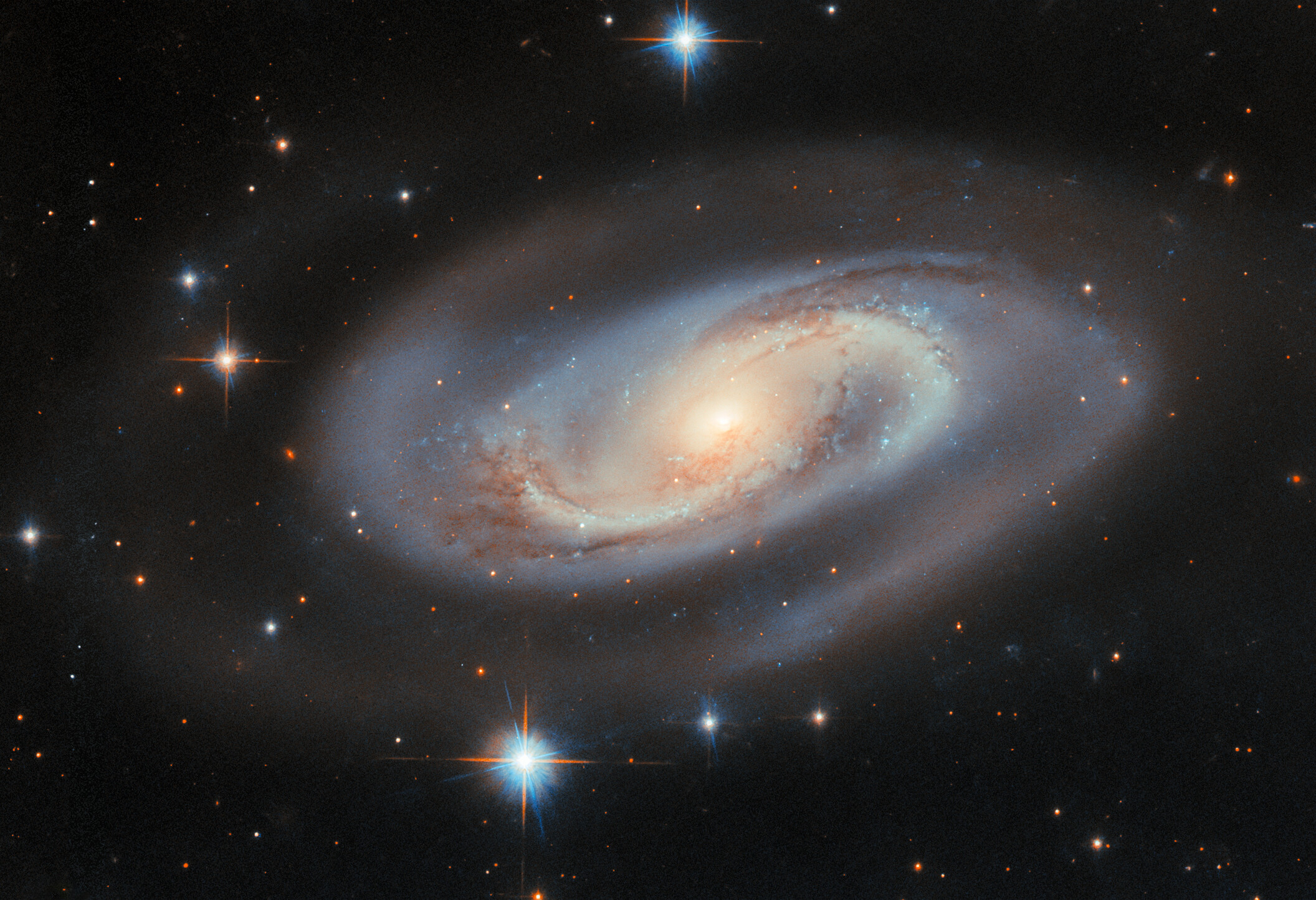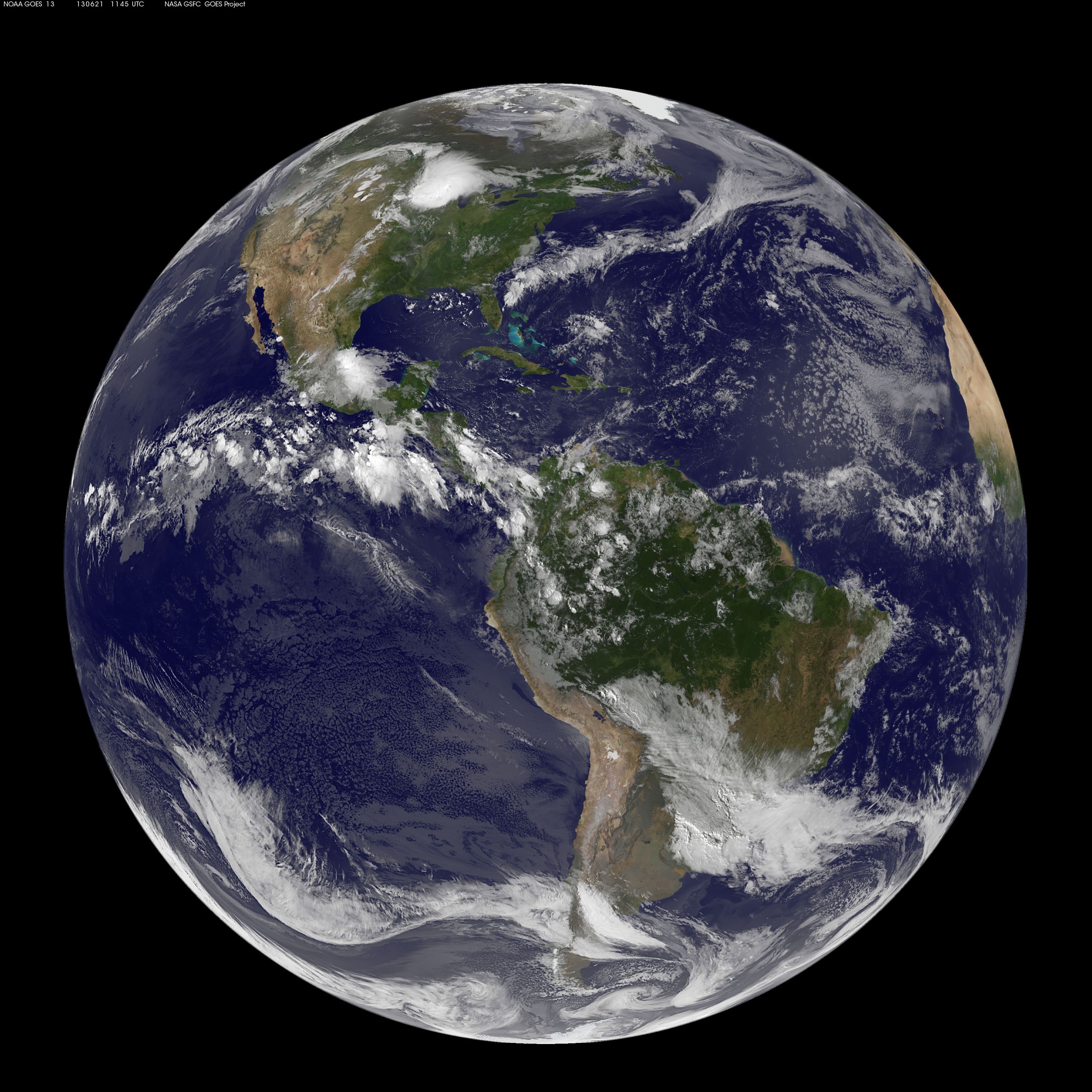NASA astronaut and Expedition 73 Flight Engineer Jonny Kim works inside the SpaceX Dragon cargo spacecraft completing cargo operations before it undocked from the International Space Station's Harmony module several hours later...
This close-up view of the United States flag plate on NASA's Perseverance was acquired on June 28, 2025 (the 1,548th day, or sol, of its mission to Mars), by the WATSON (Wide Angle Topographic Sensor for Operations and eNgineering) imager on the turret at the end of the rover's Mars robotic arm...
Three members of NASA's Lewis Research Center’s (now NASA’s Glenn Research Center) Educational Services Office pose with one of the center’s Spacemobile space science demonstration units on Nov. 1, 1964...
This Hubble image shows the spiral galaxy UGC 11397, which resides in the constellation Lyra (The Lyre)...
In 1963, Captain Engle was assigned as one of two Air Force test pilots to fly the X-15 Research Rocket aircraft. In 1965, he flew the X-15 to an altitude of 280,600 feet, and became the youngest pilot ever to qualify as an astronaut. Three of his sixteen flights in the X-15 exceeded the 50-mile (264,000 feet) altitude required for astronaut rating...
The Andromeda galaxy, also known as Messier 31 (M31), is the closest spiral galaxy to the Milky Way at a distance of about 2.5 million light-years. This new composite image contains data of M31 taken by some of the world’s most powerful telescopes in different kinds of light. This image is released in tribute to the groundbreaking legacy of Dr. Vera Rubin, whose observations transformed our understanding of the universe...
NASA astronaut Bob Hines took this picture of the waning crescent moon on May 8, 2022, as the International Space Station flew into an orbital sunrise 260 miles above the Atlantic Ocean off the northwest coast of the United States...
NASA astronaut Zena Cardman inspects her spacesuit’s wrist mirror at the NASA Johnson Space Center photo studio on March 22, 2024...
Arsia Mons, one of the Red Planet’s largest volcanoes, peeks through a blanket of water ice clouds in this image captured by NASA’s 2001 Mars Odyssey orbiter on May 2, 2025...
This full-disk image from NOAA’s GOES-13 satellite shows the Americas at the start of astronomical summer in the Northern Hemisphere on June 21, 2012...
More than 500 students with 75 teams from around the world participated in the 31st year of NASA’s Human Exploration Rover Challenge (HERC) on April 11 and April 12, 2025, near NASA’s Marshall Space Flight Center in Huntsville, Alabama. Participating teams represented 35 colleges and universities, 38 high schools, and two middle schools from 20 states, Puerto Rico, and 16 other nations...
A curious cow watches as NASA astronauts Andre Douglas and Kate Rubins perform a simulated moonwalk in the San Francisco Volcanic Field in Northern Arizona on May 14, 2024...











